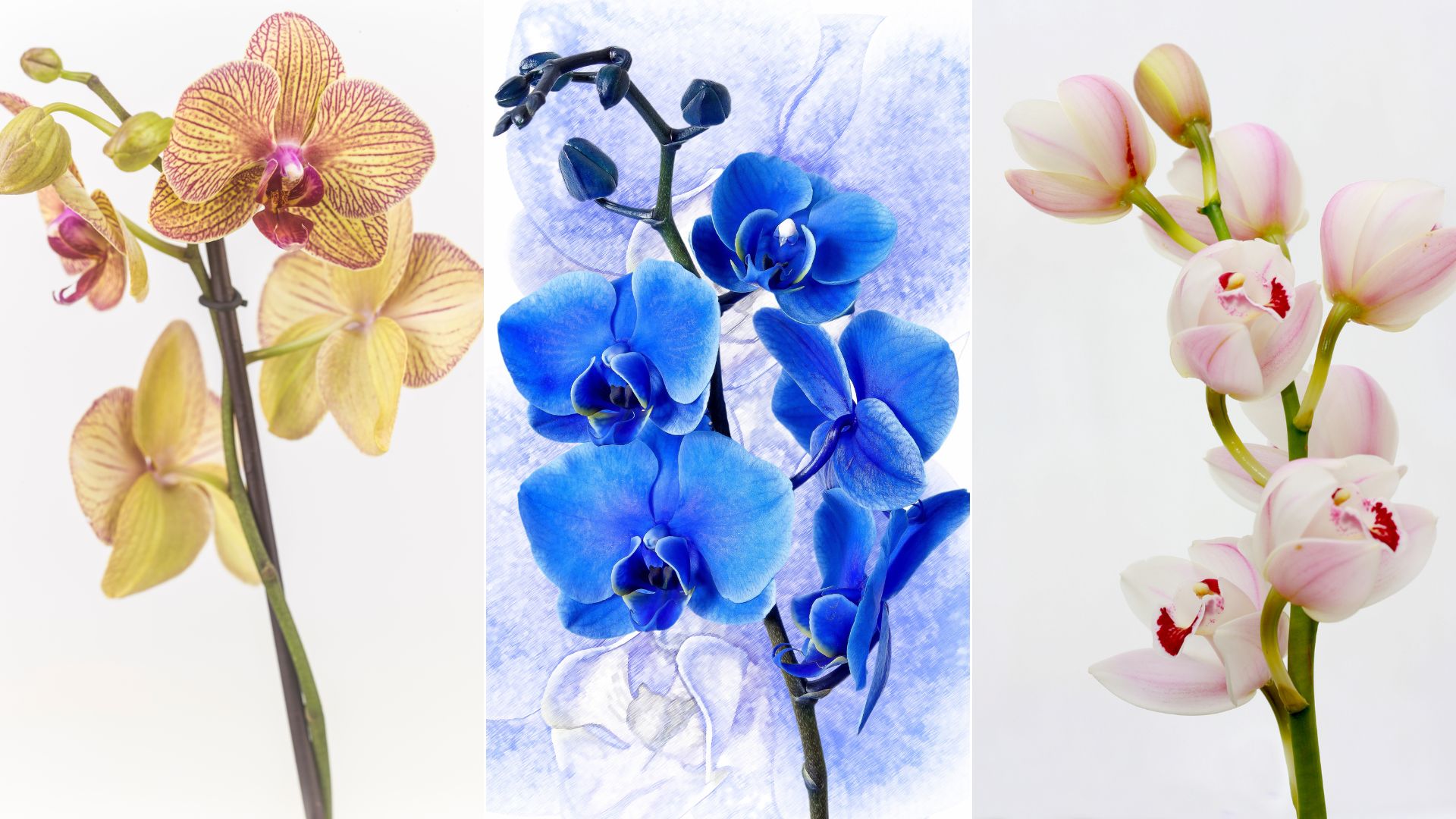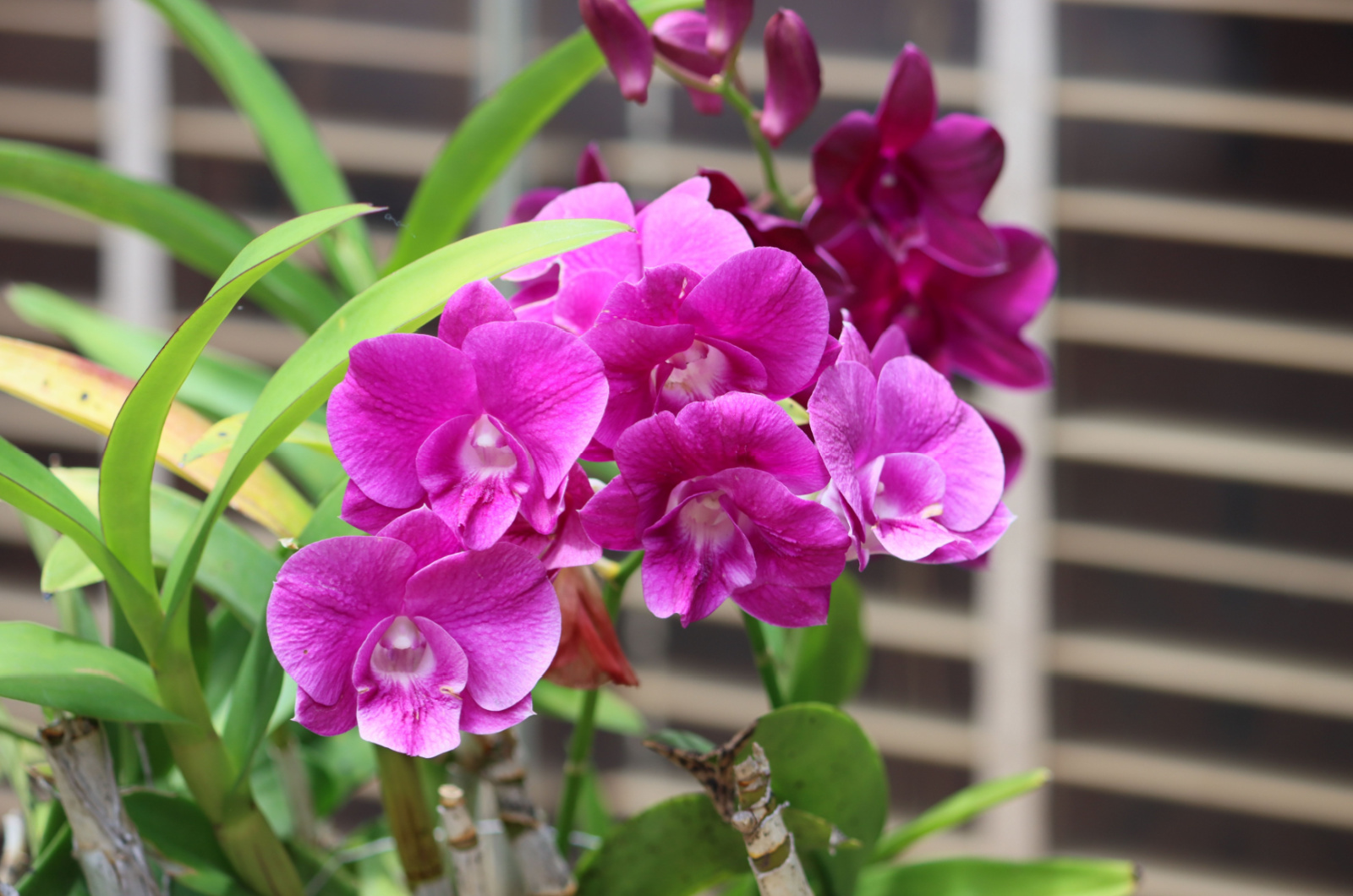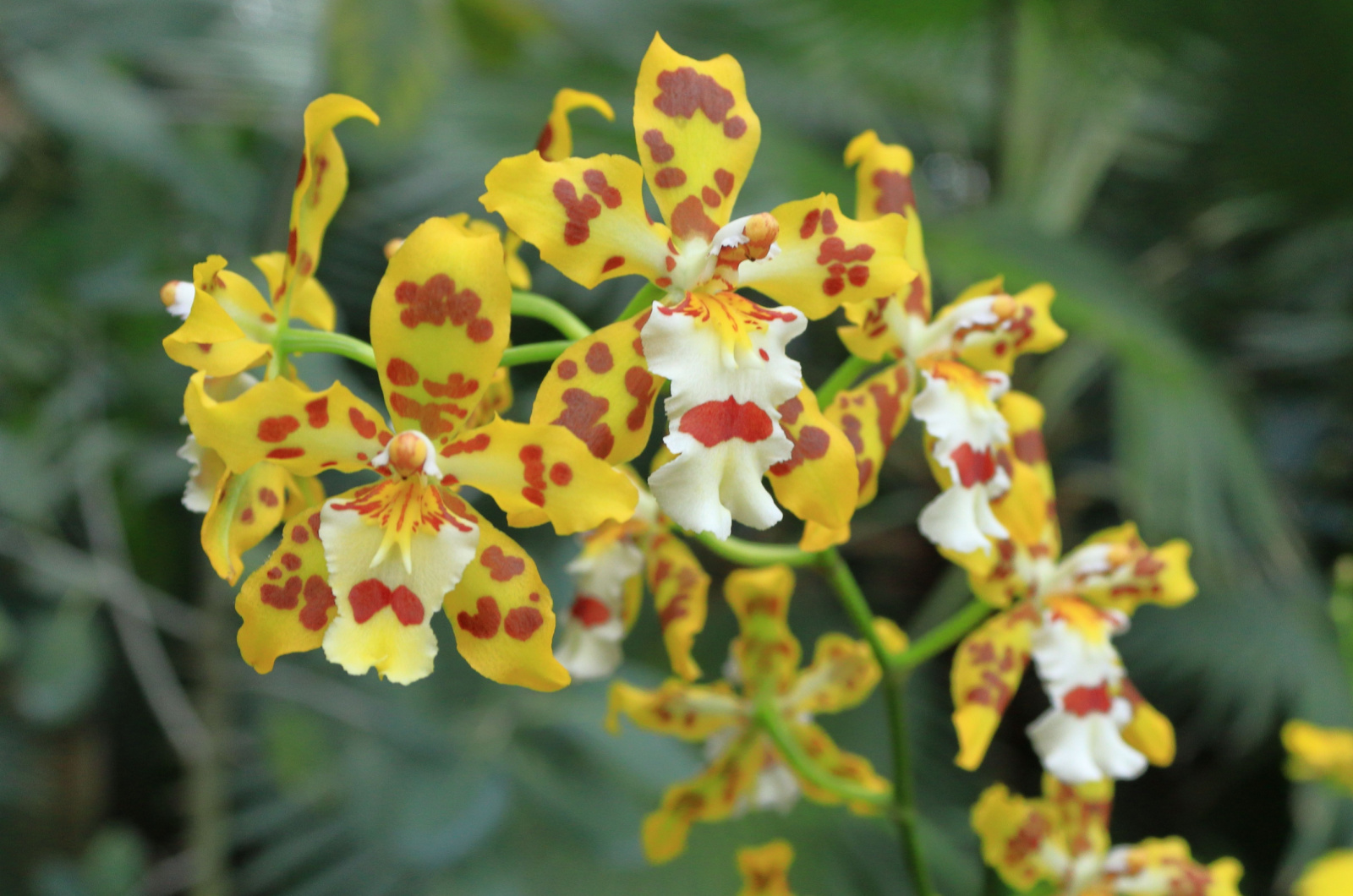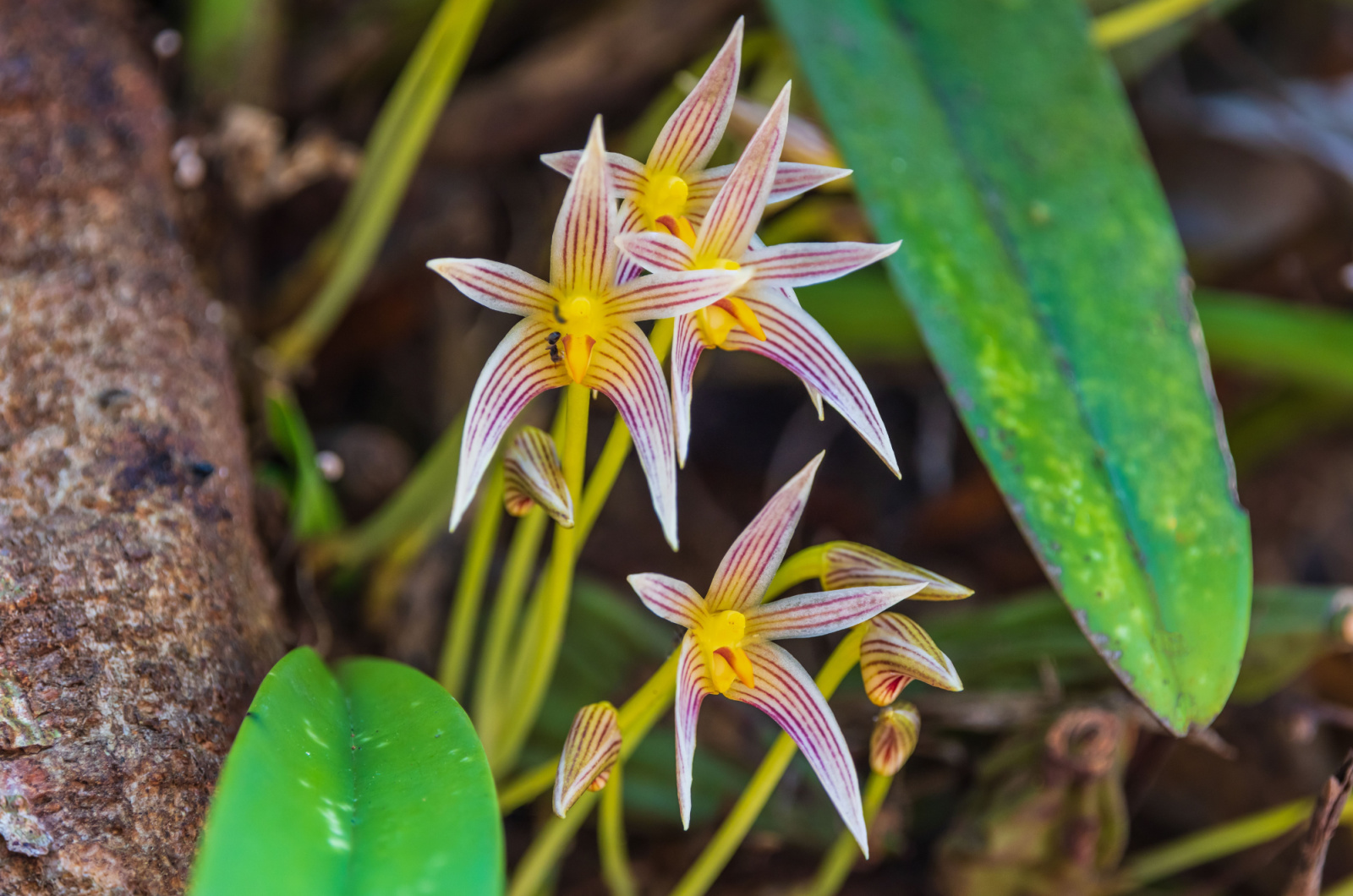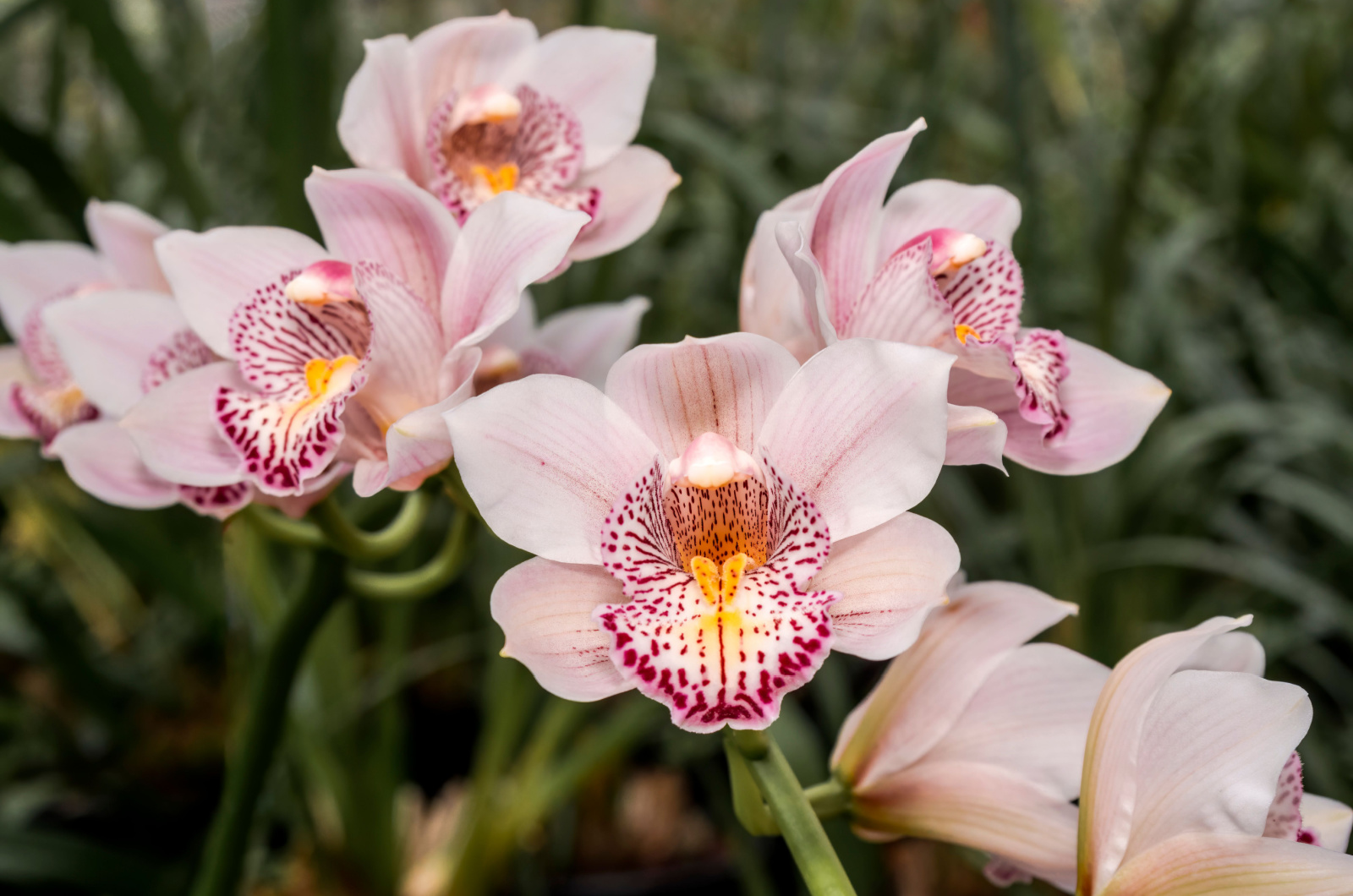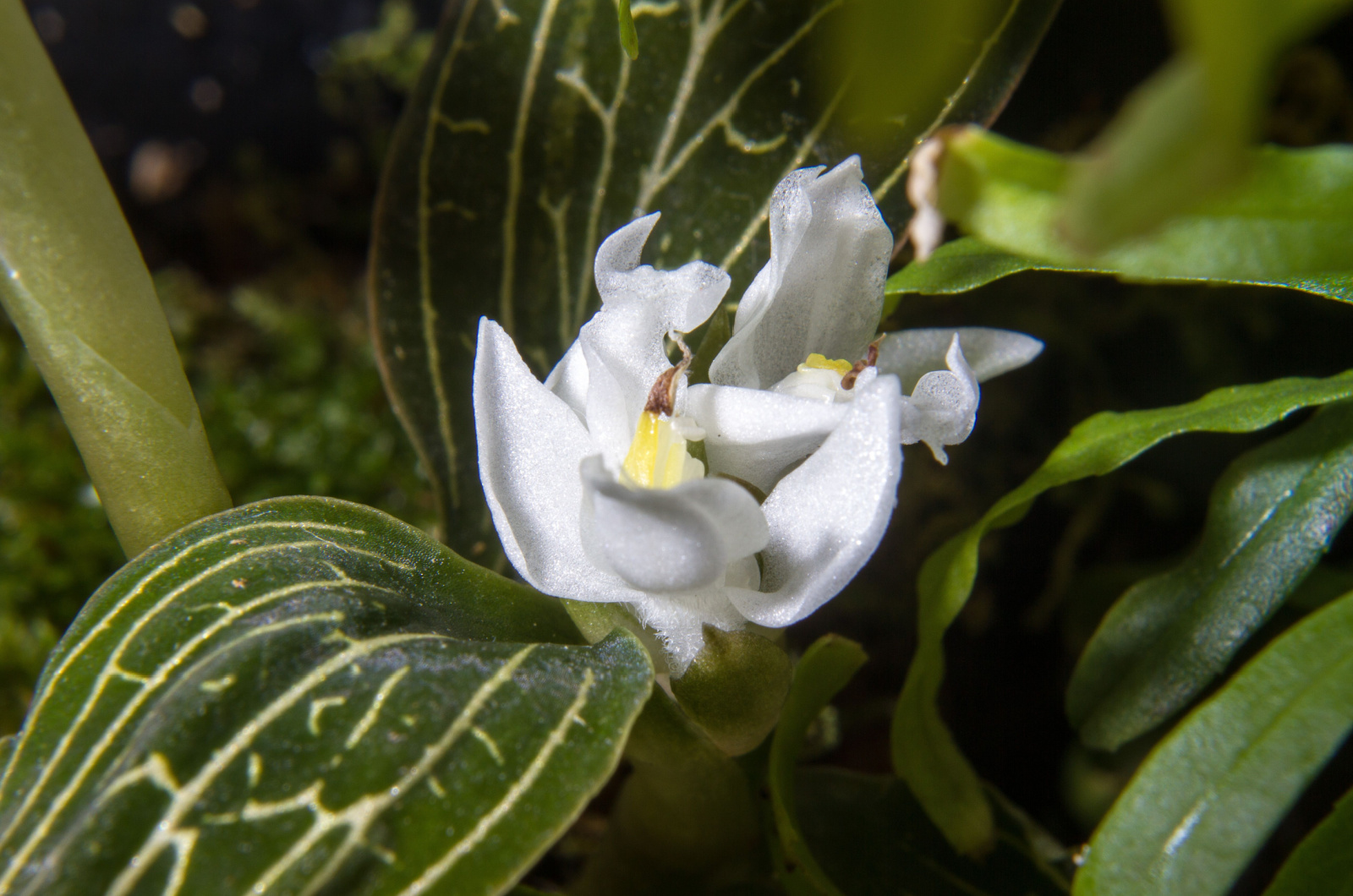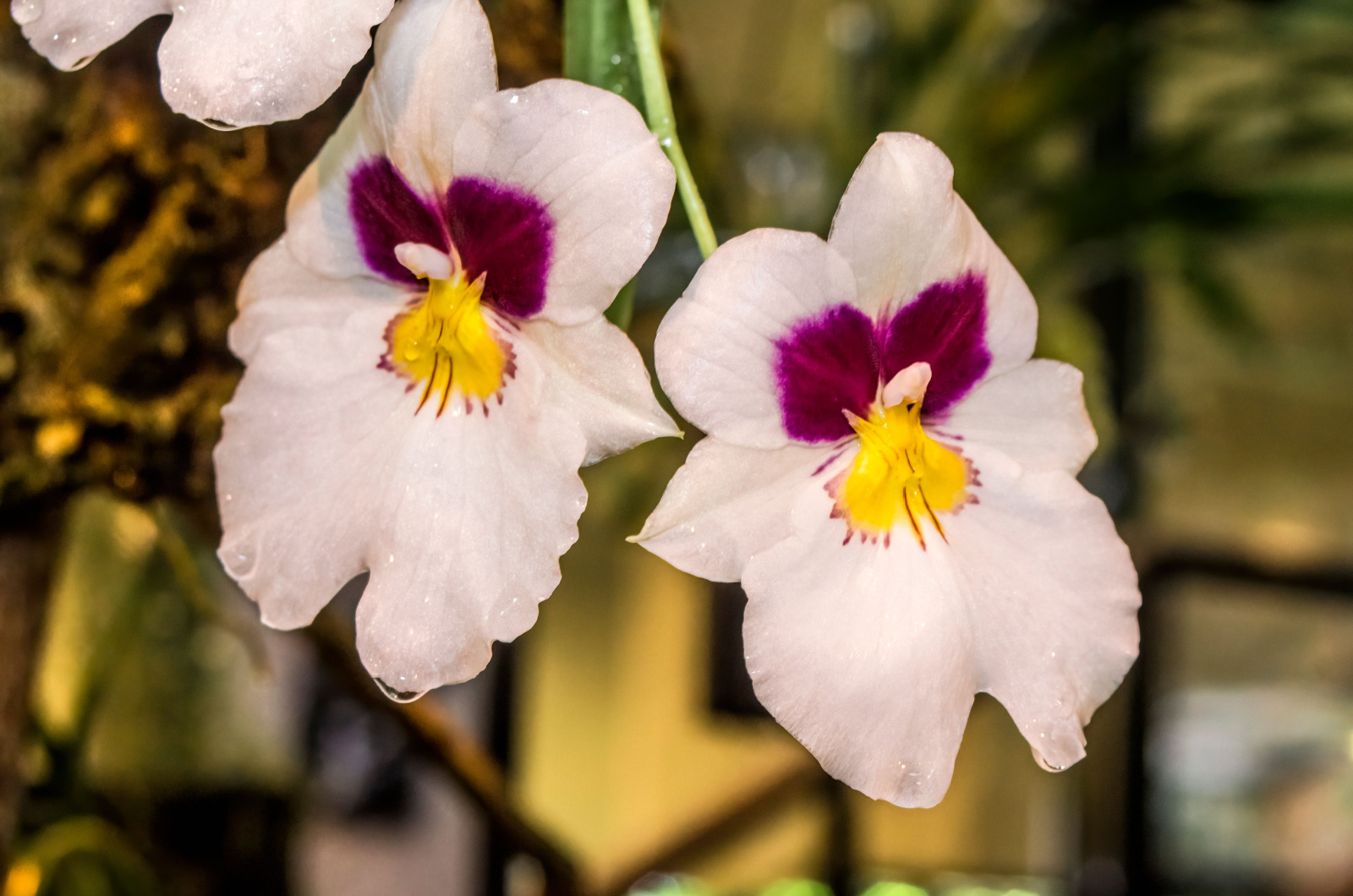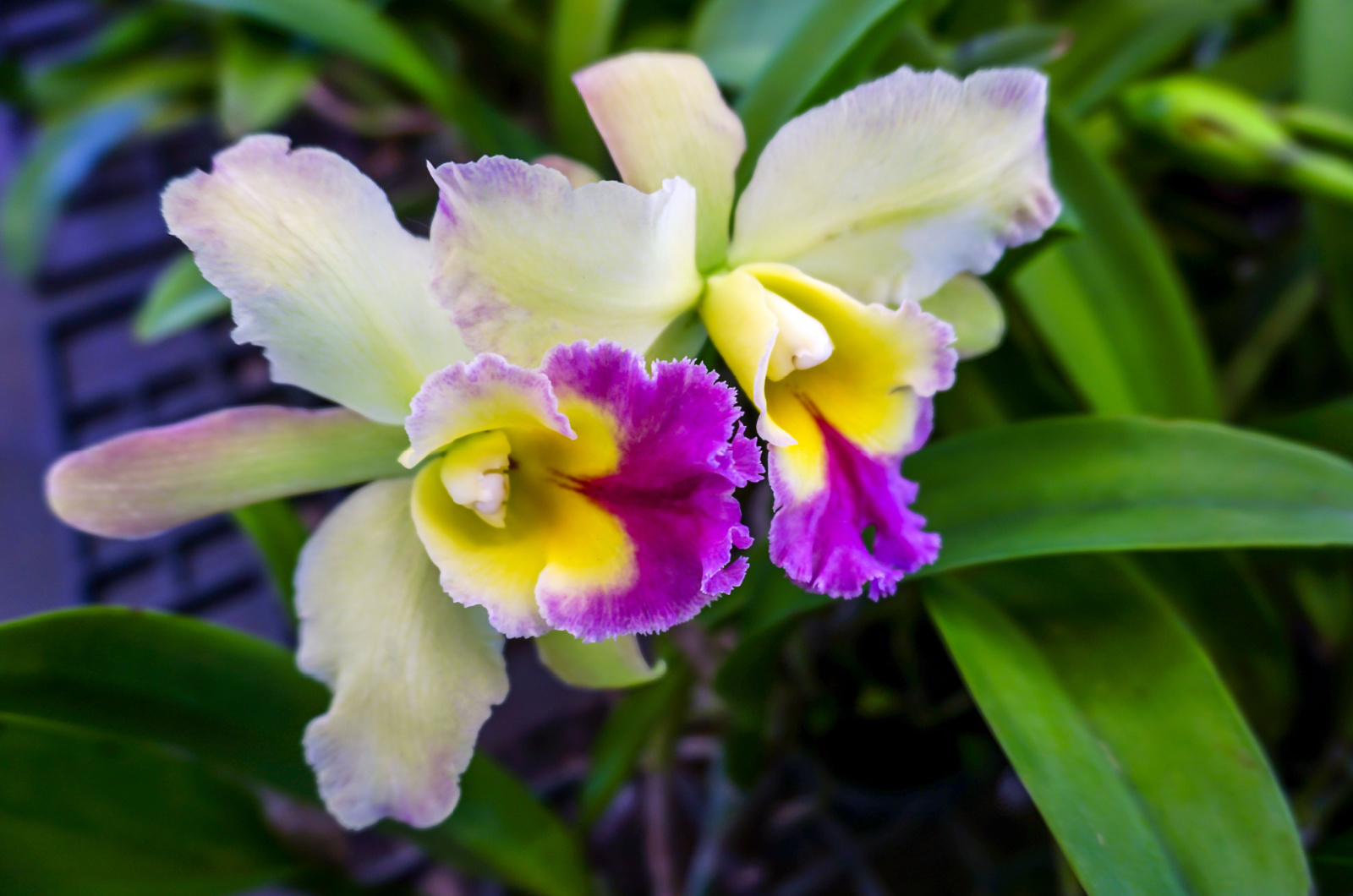Orchids are known for their high maintenance, which is why most beginner gardeners stay away from them. However, some beginner-friendly varieties are super simple to grow!
My very first houseplant was an orchid, and I managed to keep it alive even though I had no previous knowledge of anything related to plant care.
So, if I can do it, so can you!
In this article, we are going to talk about the best orchids for beginners and also share some tips on how to grow them. Don’t be afraid to add orchids to your plant collection!
1. Dendrobium
Dendrobium orchids offer a diverse range of colors and shapes, making them a delightful addition to any houseplant collection. Their star-shaped flowers can have a range of colors, from delicate pastels to vibrant hues.
They are not very needy about their environment and can endure a couple of mishaps. Dendrobium orchids can adapt to growing in both indoor and outdoor conditions.
These flowering plants grow best when exposed to bright, indirect sunlight during the day. Inadequate sunlight exposure can lead to various issues, such as damaged leaves and orchids not blooming.
To fix that, make sure to check out this handy article: Discover How Much Light Orchids Need
2. Oncidium
If you like tiny flowers that stand out with their vibrant colors, then you’ll definitely like oncidium orchids!
Oncidium orchids, also known as dancing lady orchids, showcase cascading sprays of small, vibrant flowers that grow on dark green stems. There are more than 300 in the genus, so you can pick and choose whichever orchid suits your style the best.
However, these orchids might require a bit more attention than other beginner-friendly ones. Nonetheless, their plant care is still quite easy and manageable.
Provide your oncidium orchids with bright indirect light and warm temperatures. They thrive in consistent moisture and proper air circulation around their roots. Moderate to high humidity levels are required for oncidium orchids.
Airflow is essential to avoid orchid pests and diseases, so make sure not to overcrowd them. I would suggest you keep them in an area with a very light breeze indoors.
3. Paphiopedilum
Paphiopedilum orchids, known as lady slipper orchids, feature unique slipper-shaped flowers and distinct foliage. Their exotic appearance and ease of care make them an excellent choice for beginners.
Even when they are not in bloom, paphiopedilum leaves are mottled like flowers and add visual interest all year round. These orchids can also grow in low light settings, so you can keep them further away from the window.
Paphiopedilum orchids are not needy and they can adapt to different temperature and humidity settings. Place them in moderate light and temperature – rooms with north-facing windows or no windows should be avoided if you want to promote blooming.
4. Bulbophyllum
Bulbophyllum orchids, known for their peculiar and diverse floral shapes, are a unique choice for enthusiasts. Their captivating blooms and alien-like structure make them look completely different from any other orchid.
Bulbophyllum is a genus with over 2000 species, and they all come in various forms and colors with intricate patterns and textures.
Surprisingly, these unusual orchids don’t have such unusual plant care. In fact, it is pretty straightforward!
All you need to do is place them in bright, indirect sunlight with consistent humidity and warm temperatures. Avoid exposing them to direct sunlight as it might scorch orchids’ delicate leaves and flowers.
Since most of these orchids are lithophytes or epiphytes, you should provide them with well-draining orchid mix to avoid root rot. Good airflow might also help to avoid rotting.
Also read: Terrestrial Orchid Species And The Best Way To Grow Them
5. Epidendrum
Epidendrums are known for their long-blooming period. They might even flower for almost an entire year, making your indoor space beautiful and lively.
Epidendrum orchids offer a wide variety of shapes and colors, from compact clusters to tall, arching sprays. They are versatile and adaptable, thriving in diverse environments.
Epidendrum orchids can adapt to different light settings, including moderate indoor light to direct outdoor sunlight. They can tolerate temperature fluctuations very well. It’s important to regularly water these orchids, letting the potting mix dry out between waterings.
6. Phalaenopsis
Phalaenopsis orchids, often called moth orchids, are renowned for their elegant flowers and long, deep green stems. They are among the most popular and beginner-friendly orchids, showcasing a wide array of colors and patterns.
Being one of the most popular orchids out there, you can easily grab them in grocery stores or gift shops. If you don’t have any luck there, I’m sure you’ll find some in the garden center.
These orchids prefer warm places with indirect sunlight. Additionally, they prefer some air around their roots, thus the ideal planting mix for them would be one that contains bark. When watering your orchids, always wait until the potting mix has dried to prevent overwatering.
This might be useful: Why Is My Orchid Dying? 11 Reasons And Solutions
7. Cymbidium
Cymbidium orchids are known for their large, vivid blooms and long, arching stems. They are favored for their vibrant colors and suitability for both indoor and outdoor cultivation.
These orchids can even tolerate lower temperatures and less watering. Relatively easy orchid plant care and vibrant flowers make cymbidium orchids famous amongst gardener newbies.
They can even bloom in cooler temperatures and provide you with a stunning flower display, unlike other orchids that need specific conditions in order to bloom. Moderate bright light and a bit of orchid fertilizer will keep your cymbidium happy and healthy.
8. Ludisia
Ludisia orchids feature stunning, velvety foliage with intricate patterns. While not as showy in bloom as other orchids, their captivating leaves are the star of the show. The most popular species is the Jewel orchid, also known as Ludisia dicolor.
Ludisia orchids can grow well in moderate to low light conditions, so you can place them anywhere you want inside your living space. They grow well in airy soil mixes, such as those specifically designed for tropical plants.
Higher humidity levels and watering when the soil dries out will keep those leaves looking nice and fresh. You can combine these orchids with Jewel alocasia to have a wonderful foliage display.
9. Miltonia
Miltonia orchids, often referred to as pansy orchids, produce elegant, pansy-like flowers with eye-catching patterns and pleasant fragrances. They are known for their ease of care and beautiful, contrasting flowers.
Keep them away from direct sunlight and provide them with consistent moisture to keep miltonia orchids happy and healthy. Provide adequate drainage and water when the potting mix dries to avoid overwatering.
Miltonia orchids like slightly lower temperatures at night to induce blooming, so move them to a cooler room during the flowering season.
This might be useful: Orchid Leaves Drooping: 9 Common Causes And Solutions
10. Cattleya
Cattleya orchids are prized for their large, showy flowers and delightful fragrance. Since they originate from warm regions of Central and South America, these orchids can be grown indoors and outdoors if you also live in warmer climates.
They are often considered the queen of orchids, making a stunning statement in any orchid collection. Cattleya orchids have thick leaves that store water, so they won’t get fussy if you skip a few watering sessions.
They can tolerate different light settings but prefer bright, indirect light during the day. Avoid overwatering by allowing the growing medium to dry out. If you grow them outdoors, don’t water them if it is just raining.
Related: How To Take Care Of Orchids (Beginner Friendly Guide)

